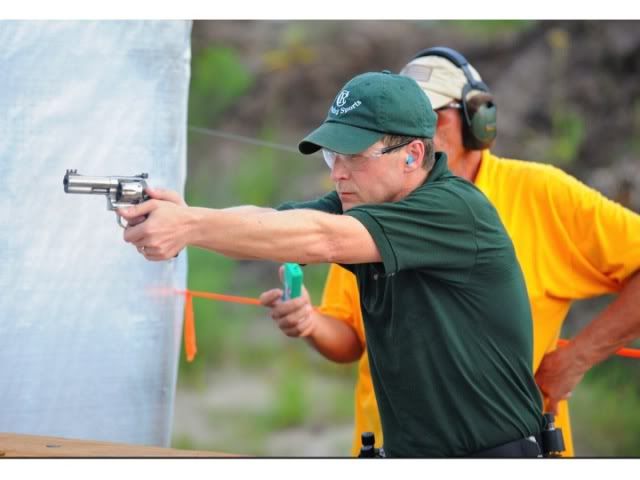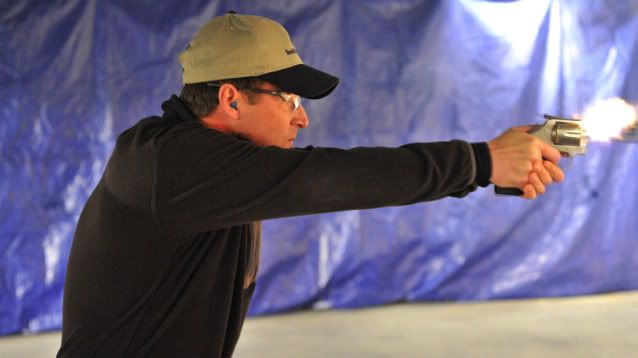Background: I've been shooting semi-autos for a while now. I purchased a revolver a while back but haven't had the chance to shoot it much. Part of the reason was that I just didn't like the way it felt when I shot it. It kind of stung my hands and that turned me off of it (I have a severe allergy to pain of any kind  ). It's been pretty much a spare gun that stays in my office ever since.
). It's been pretty much a spare gun that stays in my office ever since.
In hindsight, I think part of it was because I was trying to shoot it like a semi-auto. By that I mean instinctively trying to keep the gun from jumping too much so that the slide would work the way it was supposed. Considering that there isn't a slide to absorb some of the recoil, logically, it was then going into my hands. That's just my theory, however. I was watching others at the gun club shooting revolvers and they all seemed to let their revolvers rise a lot more than you would let a semi.
So as to my question: is there a significant difference between the technique used on a semi-auto versus a revolver? Should I be letting the gun rise and not holding it so rigidly or is the stinging hands/wrist just the nature of the beast?
Thanks!
The Noob
In hindsight, I think part of it was because I was trying to shoot it like a semi-auto. By that I mean instinctively trying to keep the gun from jumping too much so that the slide would work the way it was supposed. Considering that there isn't a slide to absorb some of the recoil, logically, it was then going into my hands. That's just my theory, however. I was watching others at the gun club shooting revolvers and they all seemed to let their revolvers rise a lot more than you would let a semi.
So as to my question: is there a significant difference between the technique used on a semi-auto versus a revolver? Should I be letting the gun rise and not holding it so rigidly or is the stinging hands/wrist just the nature of the beast?
Thanks!
The Noob




